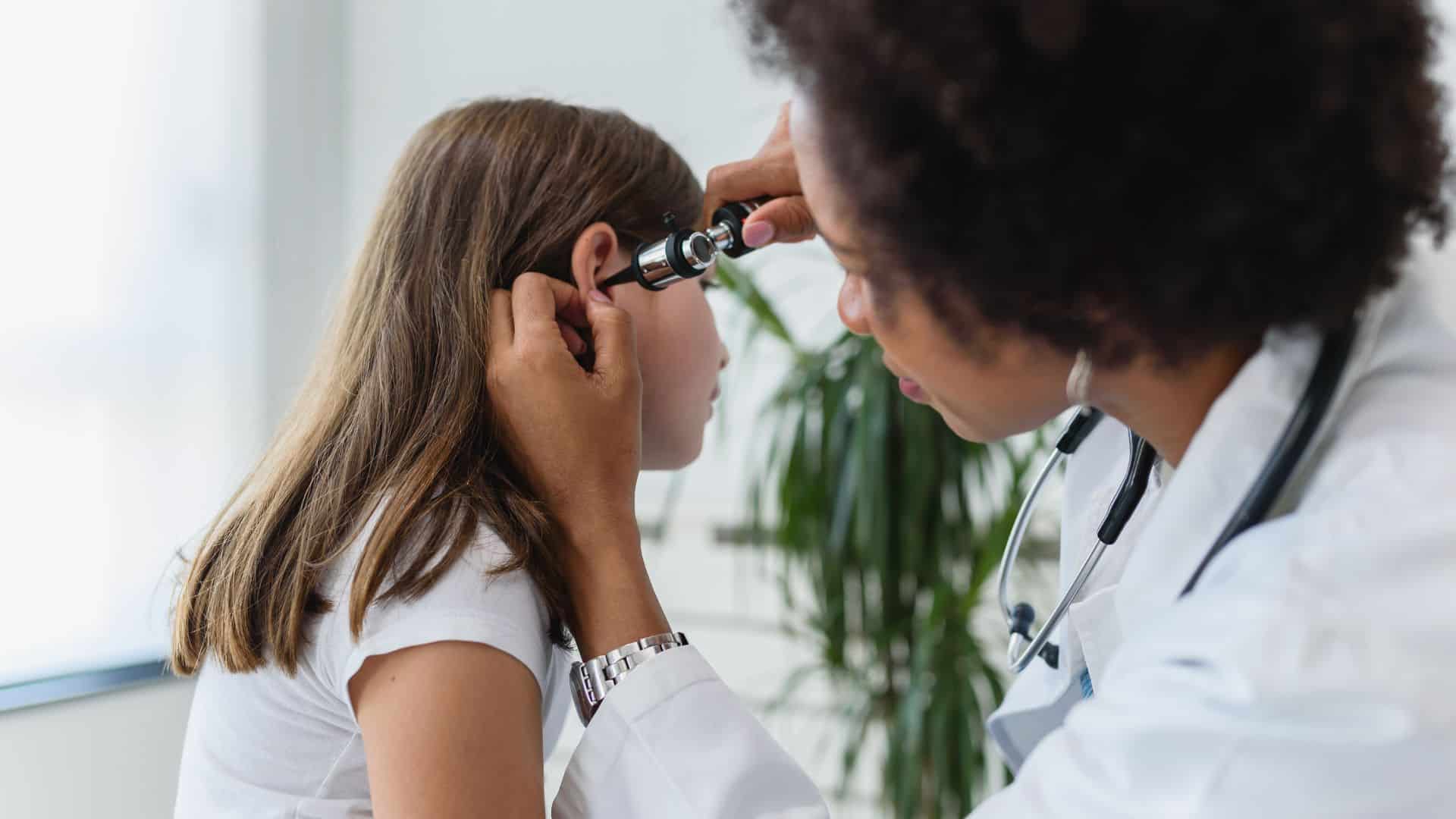
Ear infection in children are prevalent are a common ailment, and often one of the first illnesses parents encounter. Unfortunately, for many children, ear infections can become a chronic problem. When accompanied by a fever, it can quickly escalate into a painful experience for your child. As a parent, it’s essential to be well-informed about ear infections in children to provide the best care possible. In this article, we’ll cover everything you need to know about ear infections in children.
Symptoms of an Ear Infection in Children
The symptoms of an ear infection vary depending on the type of infection. The three main types are Acute Otitis Media (AOM), Otitis Media With Effusion (OME), And Chronic Otitis Media With Effusion (COME).
Acute Otitis Media (AOM)
A child with AOM, the most common type of ear infection, may experience pain in the ear, also known as an earache, swelling in the middle ear, and fluid trapped behind the eardrum. Additionally, they may have a fever.
Otitis Media With Effusion (OME)
OME can occur after an ear infection has resolved and is characterized by fluid trapped behind the eardrum. While a child with OME may not experience symptoms, a doctor can detect the liquid using a specialized instrument.
Chronic Otitis Media With Effusion (COME)
COME occurs when fluid remains in the middle ear for an extended period or repeatedly returns despite no infection. This condition can impair a child’s ability to fight off new infections and may also impact their hearing.
(National Institute of Deafness and Other Communication Disorders)
Causes of an Ear Infection
Ear infections are often caused by bacteria and occur after a child has a cold, sore throat, or other upper respiratory infection. When this happens, bacteria can spread from the upper respiratory system to the middle ear, where fluid can build up behind the eardrum.
The ear has three parts: outer, middle, and inner. The outer ear includes the earlobe, flap, and canal to the eardrum. The middle ear has three small bones that move sound vibrations to the inner ear. The inner ear helps with balance and sends signals to the brain. Other parts involved in ear infections include the eustachian tube and adenoids, which fight infection by trapping bacteria in the nose.
The sinuses and ears are connected by a narrow passage called the Eustachian tube. When you have a sinus infection or congestion, the inflammation can block the Eustachian tube and cause fluid buildup in the middle ear. This can lead to an ear infection, which can cause symptoms such as ear pain, pressure, and hearing loss.
So, sinus problems can sometimes lead to ear infections or other ear-related issues.
In addition to sinus infections, poor hygiene can also lead to ear infections. Bacteria and viruses that are present on the skin around the ear may enter the middle ear and cause an infection. Allergies can also cause inflammation in the Eustachian tube, leading to fluid buildup and an increased risk of infection.
Treating Ear Infection in Children
Treating ear infection in children depends on their symptoms. Mild cases may resolve on their own. However, if symptoms persist, it is important to seek medical attention. Depending on the severity of the infection, a doctor may prescribe antibiotics or other medications.
In some cases, surgery may be needed to drain fluid from the middle ear and reduce pressure in the affected area. This can help relieve pain and prevent further ear damage. Surgery may also be necessary to treat structural problems in the affected ear, such as a hole in the eardrum (tympanic membrane).
In addition to medical treatment, there are several steps parents can take at home to help relieve their child’s discomfort and reduce the risk of further infection. These include:
- Keeping the ears dry by using earplugs when swimming or bathing, and avoiding activities that involve water entering the ear.
- Encouraging your child to eat a healthy diet full of nutrient-rich foods such as fruits, vegetables, whole grains, and lean proteins.
- Using over-the-counter pain relievers
Here are some standard treatment options for ear infection in children:
Antibiotics: If a bacterial infection causes sinusitis, antibiotics may be prescribed to kill the bacteria. Antibiotics are typically only defined if the child has a high fever or severe symptoms lasting more than a week.
Decongestants: Decongestants, which come in the form of nasal sprays or oral medications, can help relieve congestion and reduce inflammation in the sinuses.
Pain relievers: Over-the-counter pain relievers such as acetaminophen or ibuprofen can help reduce fever and alleviate pain and discomfort associated with sinusitis.
It’s essential to consult with a pediatrician before giving any medications to children, as dosages and potential side effects can vary depending on the child’s age and weight. In some cases, children with chronic ear infection may require referral to an ear, nose, and throat specialist for further evaluation and treatment.
Emergency Treatment for Ear Infection in Children
There are instances when excruciating pain may mean an eardrum has burst or is close to bursting. In this case, it is important to seek emergency medical care to prevent damage to the ear and possible hearing loss. Our Board Certified Emergency Physicians are on duty 24/7, 365 days of the year. We’re ready to see your child out of pain and feeling better.
Works Cited
National Institute of Deafness and Other Communication Disorders. “Ear Infections in Children.” National Institute of Deafness and Other Communication Disorders, U.S. Department of Health and Human Services, www.nidcd.nih.gov/health/ear-infections-children.
Sinusitis | Boston Children’s Hospital. “Sinusitis.” Sinusitis | Boston Children’s Hospital, www.childrenshospital.org/conditions/sinusitis#:~:text=frontal%20sinus%3A%20located%20inside%20the,does%20not%20develop%20until%20adolescence.
